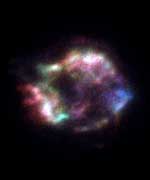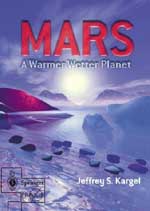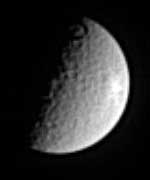Monday, January 3 – For those of you who were brave enough to fight the cold this morning to look for the annual Quandrantid meteor shower? Bravo! But if bad skies or arctic temperatures kept you from viewing, you still have another opportunity because this unusual meteor shower peaks over a period of two days.
The Quadrantid meteor shower has been known to be an incredibly concentrated display – at times producing between 50 to 120 meteors in the northern hemisphere. It is infrequently observed simply because of low temperatures in the north and bad positioning in the south. Another reason we do not known much about this shower is the short period of time that it is active. The peak can only last a few hours! The meteoroid stream itself is vast, but very accurate predictions are difficult thanks to complex streams perturbed by Jupiter’s gravity. The precise source of the Quadrantid meteor wasn’t even discovered until December 2003! Just slightly over a year ago, Peter Jenniskens of NASA Ames Research Center found evidence that tied the Quadrantids to an extinct comet now known as asteroid 2003 EH1. Historical observations reveal this comet was visible some 500 years ago, but may have suffered some type of impact that caused it to break up. Because we hit this “debris stream” at a perpendicular angle, we are “in and out” rather quickly – making precise calculations difficult at best.
The Quadrantids are named for a constellation that no longer exists on modern star atlases – Quadrans Muralis. In 1922, the International Astronomical Society removed it (along with several others) from the overburdened sky maps leaving only 88 officially designated constellations. So where do you look? The accepted radiant for the Quadrantids has now been assigned to Bootes, but the stream kept its original name to help distinguish it from another annual January shower – the Bootids. Even though the constellation might be gone, your chances are still good of catching one of these “frosty meteors”! The hours after local midnight will be best as we move into January 4. Although the waning Moon will decrease the number you may see, be sure to watch for “colors” in the display. As meteors burn up in our atmosphere, they produce colors thanks to their chemical spectra and the Quadrantids are known to range from blue to green. Best of luck!
Tuesday, January 4 – Heads up for Africa and southwestern Australia! It’s your turn for an astronomical event as the Moon will occult Jupiter for your location in the early morning hours. (see? i haven’t forgotten you!) Timing is absolutely critical for this type of observation, so please visit this IOTA page for the precise path and list of times for your area. For those of us who will only see the Moon and Jupiter separated by less than 7 degrees, we wish you clear skies!
For sky watchers around 40 degrees north, this morning will mark the latest sunrise of the year. Why not take advantage this morning before beginning your busy day and have a look at the simple beauty of the ecliptic plane? To the east and down low on the horizon will be Mercury and Venus, above them (about 17 degrees to the west) will be tiny Mars. Almost overhead, and just slightly south will be Jupiter and west of it will be the Moon. Continue your visual journey to the far west as Saturn completes this lovely arc.
With plenty of time to spare before the Moon rises tonight, let’s try for a new Messier object. Located slightly more than 2 degrees northeast of Zeta Orionis and right on the celestial equator is a delightful area of bright nebula known as the M78 (NGC 2068). Often over-looked in favour of “the Great Orion Nebula”, this 8th magnitude diffuse area is easily captured with small scopes. Discovered by Mechain in 1789, the M78 is part of the vast complex of nebulae and star birth that comprise the Orion region. Fueled by twin magnitude 10 stars, the nebula almost appears to the eye to resemble a “double comet”. Upon close scrutiny, observers will note two lobes separated by a dark band of dust and each lobe bears its own designation – NGC 2067 to the north and NGC 2064 to the south. While studying, you will notice the entire area is surrounded by a region of absorption, making the borders appear almost starless! The M78 itself is filled with T Tauri type stars… But we’ll explore why these variables are incredible as we examine their prototype later this week.
Wednesday, January 5 – Tonight let’s take a journey just a breath above Zeta Tauri and spend some time with the most famous supernova remnant of all – the M1. Factually, we know the “Crab Nebula” to be the remains of an exploded star recorded by the Chinese in 1054. We know it to be a rapid expanding cloud of gas moving outward at a rate of 1,000 km per second, just as we understand there is a pulsar in the center. We also know it as first recorded by John Bevis in 1758, and then later cataloged as the beginning Messier object – penned by Charles himself some 27 years later to avoid confusion while searching for comets. We see it revealed beautifully in timed exposure photographs, its glory captured forever through the eye of the camera — but have you ever really taken the time to truly study the M1? Then you just may surprise yourself…
In a small telescope, the “Crab Nebula” might seem to be a disappointment – but do not just glance at it and move on. There is a very strange quality to the light which reaches your eye, even though at first it may just appear as a vague, misty patch. To small aperture and well-adjusted eyes, the M1 will appear to have “living” qualities – a sense of movement in something that should be motionless. This aroused my curiosity to study and by using a 12.5″ scope, the reasons become very clear to me as the full dimensions of the M1 “came to light”.
The “Crab” Nebula holds true to so many other spectroscopic studies I have enjoyed over the years. The concept of differing light waves crossing over one another and canceling each other out – with each trough and crest revealing differing details to the eye – is never more apparent than during study. To truly watch the M1 is to at one moment see a “cloud” of nebulosity, the next a broad ribbon or filament, and at another a dark patch. When skies are perfectly stable you may see an embedded star, and it is possible to see six such stars. It is sometimes difficult to “see” what others understand through experience, but it can be explained. It is more than just the pulsar at its center teasing the eye, it is the “living” quality of which I speak -TRUE astronomy in action. There is so much information being fed into the brain by the eye!
I believe we are all born with the ability to see spectral qualities, but they just go undeveloped. From ionization to polarization – our eye and brain are capable of seeing to the edge of infra-red and ultra-violet. How about magnetism? We can interpret magnetism visually – one only has to view the “Wilson Effect” in solar studies to understand. What of the spinning neutron star at its heart? We’ve known since 1969 the M1 produces a “visual” pulsar effect! We are now aware that about once every five minutes, changes occuring in the neutron star’s pulsation effect the amount of polarization, causing the light waves to sweep around like a giant “cosmic lighthouse” and flash across our eyes. For now, l’ll get down of my “physics” soapbox and just let it suffice to say that the M1 is much, much more than just another Messier. Capture it tonight!!
Thursday, January 6 – Since we’ve studied the “death” of a star, why not take the time tonight to discover the “birth” of one? Our journey will start by identifying Aldeberan (Alpha Tauri) and moving northwest to bright Epsilon. Hop 1.8 degrees west and slightly to the north for an incredibly unusual variable star – T Tauri.
Discovered by J.R. Hind in October 1852, T Tauri and its accompanying nebula, NGC 1555 set the stage for discovery with a pre-main sequence variable star. Hind reported the nebula, but also noted that no catalog listed such an object in that position. His observance also included a 10th magnitude uncharted star and he surmised that the star in question was a variable. On either account, Hind was right and both were followed by astronomers for several years until they began to fade in 1861. By 1868, neither could be seen and it wasn’t until 1890 that the pair was re-discovered by E.E. Barnard and S.W. Burnham. Five years later? They vanished again.
T Tauri is the prototype of this particular class of variable stars and is itself totally unpredictable. In a period as short as a few weeks, it might move from magnitude 9 to 13 and other times remain constant for months on end. It is about average to our own Sun in temperature and mass – and its spectral signature is very similar to Sol’s chromosphere – but the resemblance ends there. T Tauri is a star in the initial stages of birth!
So what exactly are T Tauri stars? They may be very similar in ways to our own Sun but they are far more luminous and rotate much faster. For the most part, they are located near molecular clouds and produce massive outflows of this material in accretion as evidenced by the variable nebula, NGC 1555. Like Sol, they produce X-ray emissions, but a thousand times more strong! We know they are young because of the spectra – high in lithium – which is not present at low core temperatures. T Tauri has not reached the point yet where proton to proton fusion is possible! Perhaps in a few million years T Tauri will ignite in nuclear fusion and the accretion disk become a solar system. And just think! We’re lucky enough to see them both…
Friday, January 7 – For mid-northern latitudes, this morning will be the last chance to see the crescent Moon (gosh, aren’t you crushed?) before it goes new. But for those living in northwestern America, the treat will be extra special as the Moon will occult Antares! Be sure to visit IOTA for precise times and locations.
Are your ready for a real weekend treat? Then look no further than the night sky above as Comet Machholz will be putting on one of the best shows of the year as it appears around 2 degrees west of the Plieades star cluster!
Near the ecliptic, and with a rough visual magnitude of slightly less than 2, the Plieades (M45) will appear brighter than Comet Machholz – but current information suggests that C/2004 Q2 will have achieved 4th magnitude by that time – making both easy unaided-eye objects. Average binoculars span a field of around 4 degrees, so both objects should fill the field of view! While watching, take the time to practice with size, distance and magnitude observations. The M45 spans approximately 1.2 degrees of sky – how does the size of the comet’s coma compare? Since the two are around 2 degrees apart, how long does the tail seem to span? The brightest of the major stars in the Plieades is 2.8 and the dimmest approximately 5.6 – by defocusing, how bright does Comet Machholz nucleus appear in comparison? You know what direction the M45 is from Machholz, which way does the twin tail appear to go?
Of course, you needn’t truly worry about any of this just to enjoy the view! I’ll race you there…
Saturday, January 8 – So are you ready for a real challenge? Then take advantage of dark sky time to head toward Orion. Tonight our aim is toward a single star – but there is much more hiding there than just a point of light!
Our goal is the eastern-most star in the “belt”, Zeta Orionis, or better known as Alnitak. At a distance of some 1600 light years away, this 1.7 magnitude beauty contains many surprises – the first being that Zeta is a triple system. Fine optics, high power and steady skies will be needed to reveal this challenge! Want more? Then look about 15′ east and you will see that Alnitak resides in a fantastic field of nebulosity which is illuminated by our tripartite star. The NGC2024 is an outstanding area of emission that holds a rough magnitude of 8 – viewable in small scopes but will require dark sky. So what’s so exciting about a fuzzy patch? Then look again, for this beauty is known as the “Flame”! Larger telescopes will deeply appreciate this nebula’s many dark lanes, bright filaments and unique shape! Still not enough? Then break out the big scopes and put Zeta out of the field of view to the north at high power and allow your eyes to re-adjust. When you look again, you will see a long, faded ribbon of nebulosity called IC434 to the south of Zeta that stretches for over a degree. The eastern edge of the “ribbon” is very bright and mists away to the west… But hold your breath and look almost directly in the center. See that dark notch with two faint stars south of it? You have now located one of the most famous of the Barnard dark nebula – B33.
You may exhale now. The B33 is also known as the “Horsehead Nebula”. The “Horsehead” is a very tough visual object – the classic chess piece shape only seen in photographs – but those of you who have large aperture can see a dark “node” that is improved with a filter. The B33 itself is nothing more than a small area comsically (about 1 light year in expanse) of obscuring dark dust, non-luminous gases, and dark matter – but what an incredible shape! If you do not succeed at first attempt? Do not give up. The “Horsehead” is one of the most challenging objects in the sky and has been observed with apertures as small as 150mm. Keep trying! This just might be your lucky “Knight”…
Sunday, January 9 – Tonight’s destination will be within our own solar system, but with good reason! As we know, all the orbits of the planets are tilted relative to our own Earth’s orbit. This means that each time a planet completes an orbit around the Sun, it must pass over our own orbital plane twice. One time it will move from above Earth’s orbit to below, and the next it will go in the opposite direction. Tonight, Saturn will cross Earth’s orbital plane from below to above and this action of passing is what is astronomically known as the “ascending node”. It is rather special because it will be another 29 years before Saturn completely orbits the Sun and achieves the “ascending node” again!
So what does that mean to those wishing to view Saturn tonight? Not much other than it is a “cool” astronomy fact. The best time to view Saturn is at opposition which won’t occur for about another year. The most interesting part about watching Saturn right now is the ring system. Like our Earth, Saturn tilts on its axis. Since the ring system is equatorial, our best views of the rings themselves come when Saturn is highly inclined. As luck would have it, Saturn is well placed right now for just such viewing. Right now, it’s saturnian winter for the Ring King’s northern hemisphere, so get thee out there an explore! Small telescopes at high power can make out the pencil slim line of the Cassini Division on a stable night, while larger telescopes can easily spot other ring divisions. Be sure to watch for Saturn’s many moons as well. Titan is easily visible to the smallest of scopes and even a 114mm can reveal as many as four others. Enjoy it tonight!
Is it gone yet? Yes! New Moon week is about to begin, so expect some more challenging objects for veteran observers next time. For those just beginning? Don’t worry. There will be plenty for you to explore as well! I would like to thank all of you who take time to write – you’ll never know how much I appreciate it! (and earthlink users? please check your rejected mail for answers to your questions.) Until next time, ask for the Moon but keep reaching for the stars!
Light speed… ~Tammy Plotner



